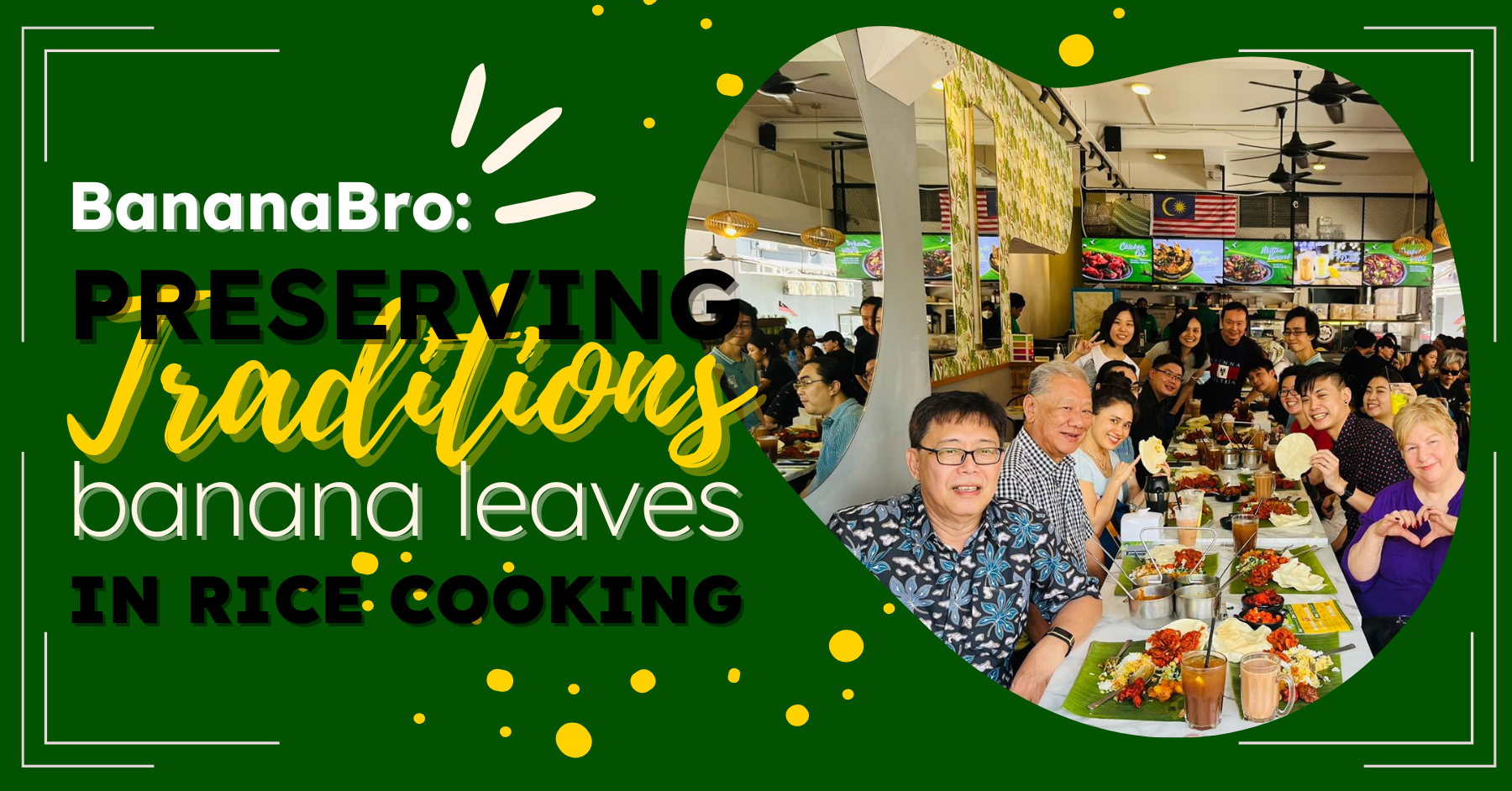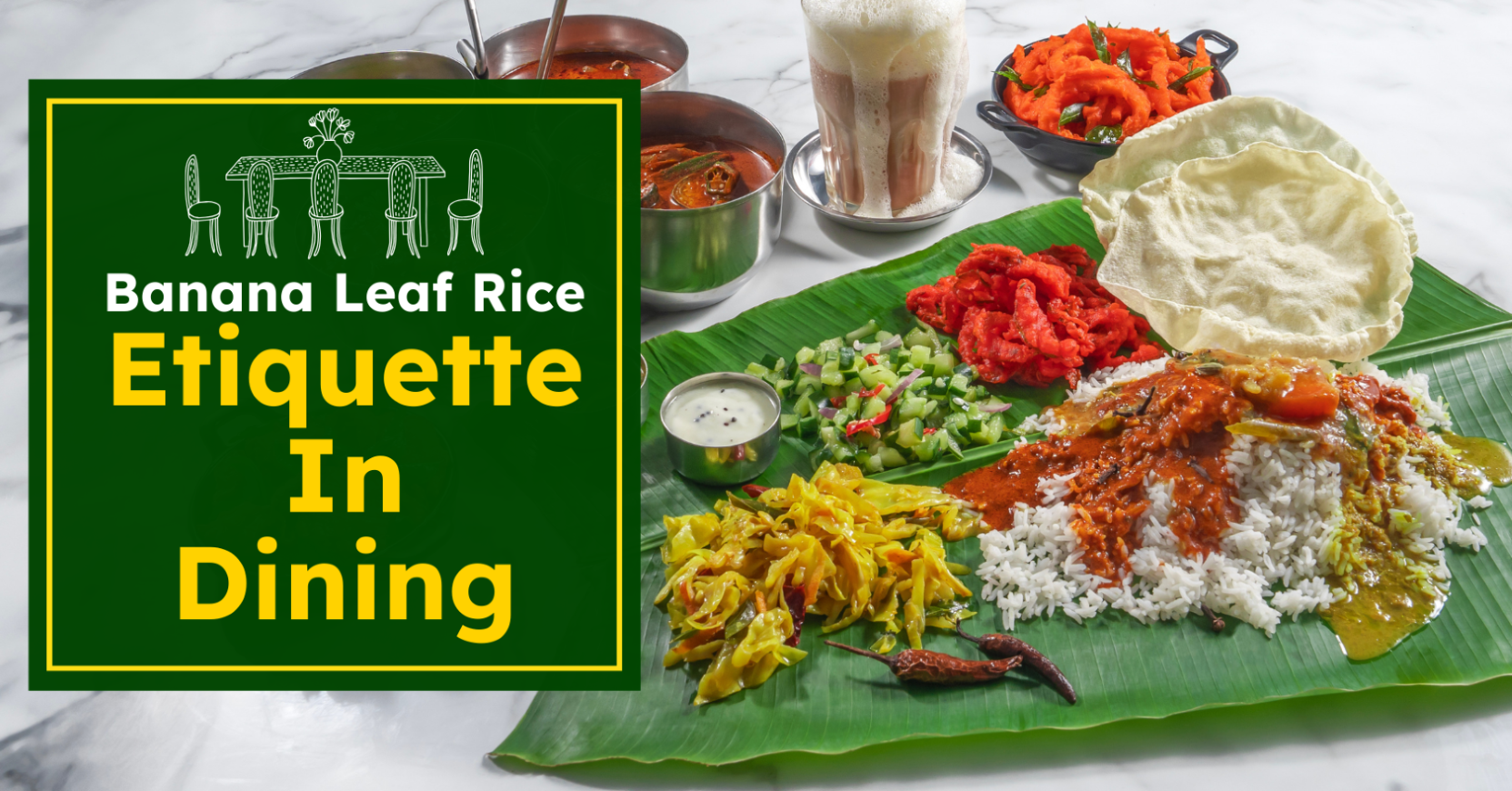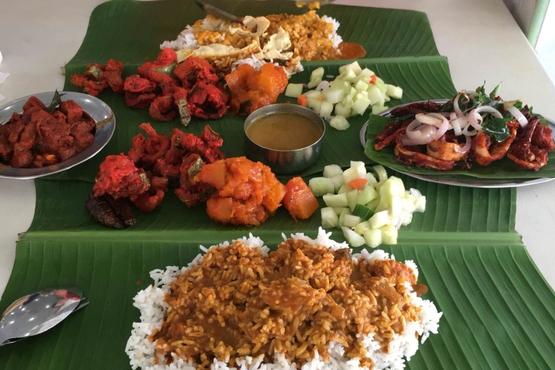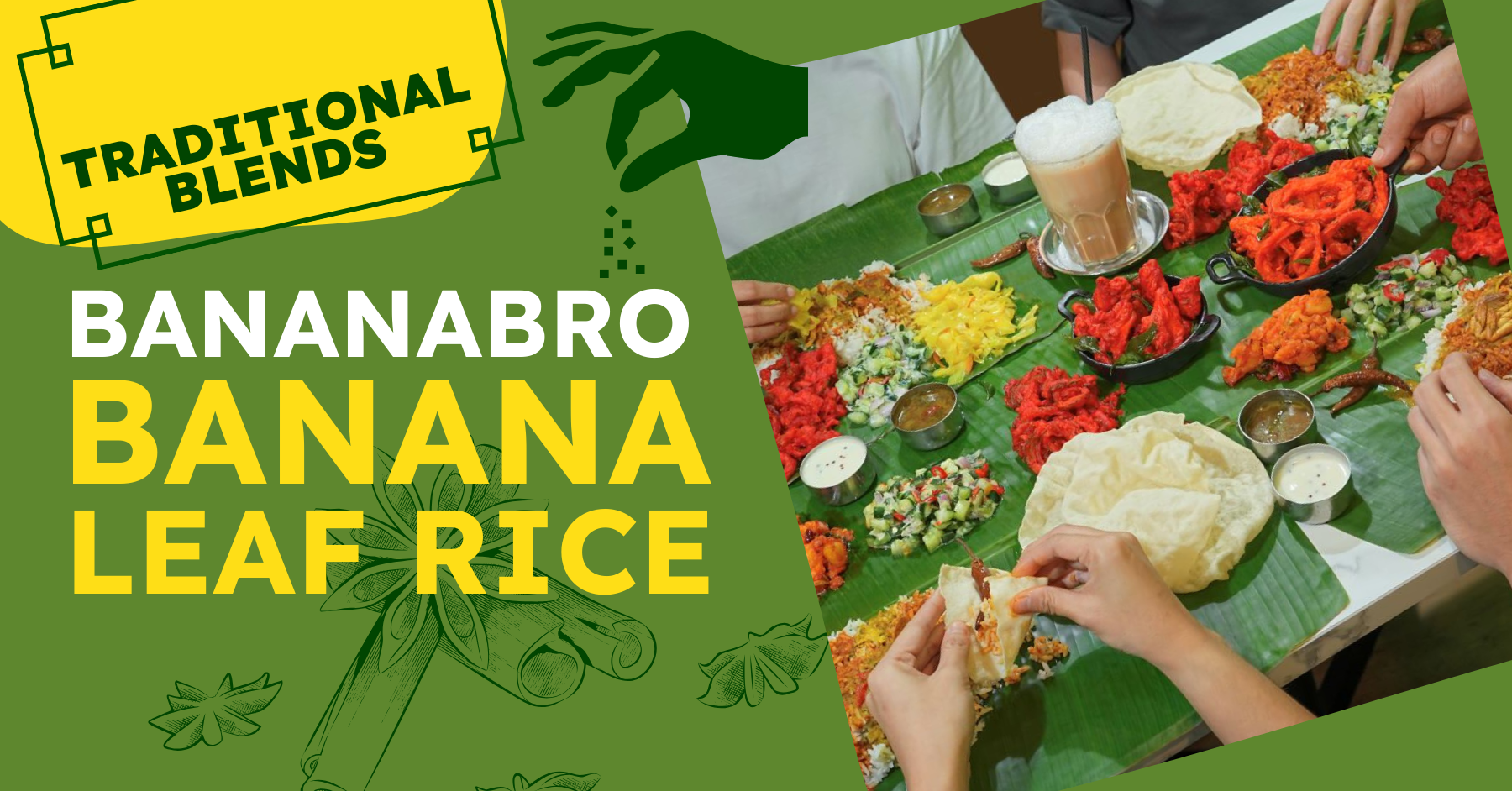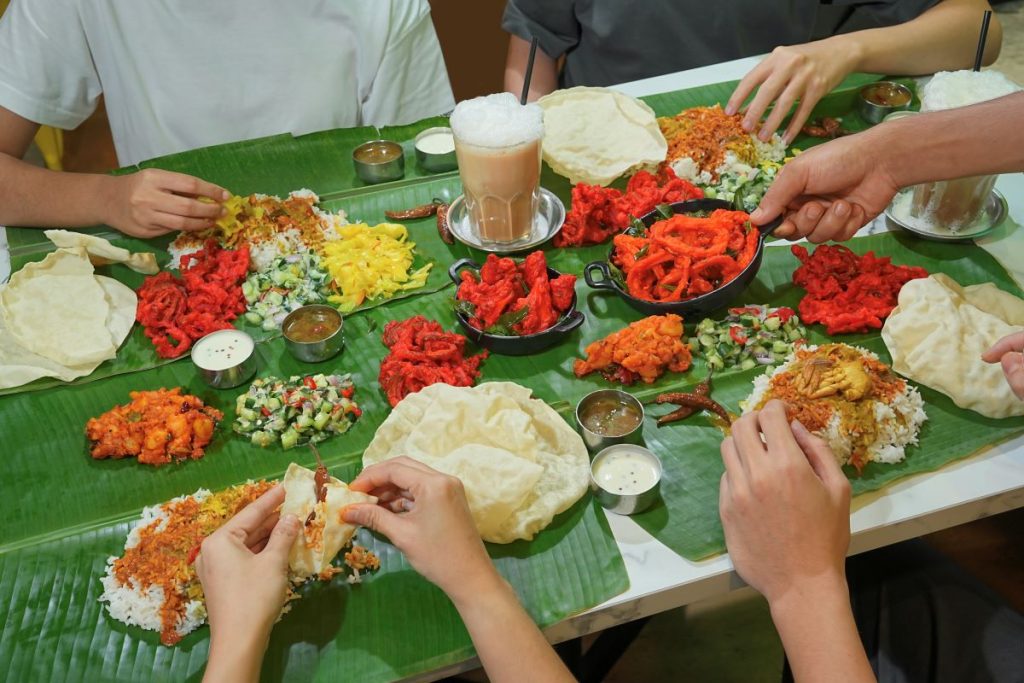In this article we are going to discuss in a very important topic. Preserving traditions by using banana leaves in rice cooking.
Let’s go!
For centuries, the use of banana leaves in cooking rice has been a time-honored tradition in many cultures around the world. This age-old culinary practice not only imparts a unique flavor to the rice, but also offers a sustainable and environmentally-friendly alternative to modern cooking methods.
As we embark on a historical exploration of this traditional practice, we invite our readers to delve into the roots of this practice and discover the cultural significance and practicality behind it. Generations have used banana leaves in cooking. Through the ages, people have passed down the art of preparing rice in these natural wrappers.
Exploring the use of banana leaves in cooking rice provides a window into the history and customs of different societies, as well as a deeper understanding of the connection between food and culture. By preserving and celebrating these traditional cooking techniques, we can not only honor the wisdom of our ancestors but also contribute to the sustainability of our planet.
Join us on this journey as we uncover the timeless tradition of using banana leaves in cooking white rice, and gain a new appreciation for the rich tapestry of culinary practices that have shaped our world.
[Explained] Food On Banana Leaves
Banana leaves have a rich cultural significance in many Asian countries, particularly in the context of rice cooking. Fresh banana leaves, in addition to their aromatic and flavor-enhancing properties, serve as a natural and sustainable alternative to aluminum foil or parchment paper, especially in traditional methods of steaming or grilling rice dishes.
Beyond their practical applications, banana leaves also carry spiritual and symbolic importance in rituals and celebrations. People often use these broad leaves as serving platters or as a way to honor the earth and the flavorful dishes it provides. Their wide variety of usage in rice cooking reflects the deeply rooted cultural traditions and reverence for nature in many Asian cuisines.
Traditional Method
In traditional cooking, people widely use banana leaves as a natural wrapper for steaming and grilling, as well as for lining cooking vessels and serving platters. The method involves cleaning the leaves, cutting them into the desired shape, and then wrapping food in them before placing them over a heat source. This symbol of tradition imparts a delightful aroma and flavor to the food while keeping it moist and tender.
Ancient civilizations, such as those in Southeast Asia, used banana leaves in their culinary creations. Families have passed down these cultural heritage practices through generations, teaching their children how to prepare and use the leaves in various culinary applications.
Moreover, using banana leaves in traditional cooking practices holds an undeniable cultural and culinary significance. They are a lot of health benefits as well as eco-friendly alternative to single-use plastics, aluminum foil or parchment paper. They also add a distinct flavor to dishes and fragrance to the variety of food. Additionally, using banana leaves is a way to stay connected to traditional food practices, honoring the techniques and ingredients of our ancestors. Overall, many cultures around the world cherish and preserve the time-honored tradition of using banana leaves in traditional cooking.
[Overview] Traditional method of cooking rice using banana leaves.
The traditional method of cooking rice using banana leaves involves a meticulous process that imparts a unique flavor and subtle aroma to the rice. First, carefully select and clean the green banana leaves to remove any dirt or impurities. Then, briefly wilt the banana leaves over an open flame to make them pliable and release their natural fragrance.
Next, season the rice with ingredients such as coconut milk, pandan leaves, and a pinch of salt before placing it onto a clean banana leaf. After that, wrap the contents carefully in the banana leaf, ensuring a tight seal to trap in the flavors and moisture.
Place the wrapped rice parcel in a steamer and cook until the rice is tender and infused with the aroma of the banana leaves. The result is a fragrant and slightly sweet rice that pairs perfectly with savory dishes.
The use of banana leaves in this traditional dish recipes holds great significance. Aside from imparting a unique flavor and aroma to the rice, banana leaves also act as a natural and sustainable alternative to cooking vessels, eliminating the need for non-biodegradable packaging. Additionally, the process of cooking rice with banana leaves showcases the culinary heritage of many Southeast Asian communities.
The Importance of Preserving Flavors and Aroma.
Preserving the flavors and aroma of food is crucial in maintaining the quality and taste of the popular dishes. By employing the right methods, we can retain the natural flavors and aromas of ingredients, enhancing the taste buds and overall dining experience. Whether it’s through cooking techniques, storage methods, or ingredient selection, preserving flavors and aromas plays a significant role in creating delicious and memorable meals.
Special Occasions and Banana Leaves
In many Southeast Asian cultures, banana leaves play a significant role in various special occasions such as weddings, festivals, and religious ceremonies. The traditional applications of banana leaf in these settings is to serve as a food wrap, platter or plate for presenting and serving food. The use of banana leaves holds symbolic importance, representing purity, abundance, and prosperity.
During weddings, people often use banana leaves to serve a wide range of dishes such as rice, curries, and sweets. In festivals, people utilize banana leaves to present offerings to deities and to serve special dishes made for the occasion. In religious ceremonies, people commonly use banana leaves as a base for creating flower or rice offerings and for serving meals as part of the rituals.
The use of banana leaves not only enhances the visual appeal of the dishes but also contributes to the overall atmosphere and significance of these special occasions. It showcases the cultural exchanges and culinary significance of the event, and the natural fragrance of the leaves adds a unique element to the dining experience. The tradition of using banana leaves in these settings further emphasizes the cultural and traditional values upheld during these important gatherings.
The Used of Banana Leaves in Special Occasions
In many cultures, people commonly use banana leaves during special occasions for a variety of purposes, holding significant importance. People frequently utilize them for decorative purposes, serving vessels, and in religious ceremonies.
For decorative purposes, people often use banana leaves to line tables and floors as a form of natural and eco-friendly decoration. People can also fashion them into intricate designs or use them as a backdrop for traditional ceremonies.
In terms of serving vessels, people use banana leaves to wrap a variety of dishes such as tamales or rice. This is to imparting a unique flavor and aroma to the dish. This method of serving also adds a natural charm to the dining experience.
Banana leaves also play a vital role in religious ceremonies, symbolizing purity and prosperity. People often utilize them in rituals and offerings to deities as a mark of respect and devotion.
Banana leaves play a significant role in specific occasions and traditions, including weddings, where people use them for decoration and serving traditional food. Additionally, many festivals incorporate banana leaves in various ways, such as lining streets for processions or as part of religious offerings. Overall, cultural and religious customs deeply intertwine banana leaves, playing an essential role in special occasions.
Banana Leaves to Enhance the Dining Experience.
Using banana leaves to enhance the dining experience goes beyond just being an environmentally friendly alternative to disposable plates. It holds great cultural and traditional significance in many parts of the world and adds a unique and rustic charm to any meal. From enhancing the aroma and flavor of the food to providing a visually stunning presentation, banana leaves offer more than just their practical use. This age-old practice is being rediscovered and appreciated for its sustainable and eco-friendly nature, making it a popular choice for many chefs, event organizers, and eco-conscious consumers. Understanding the significance of using banana leaves can truly elevate the dining experience and bring an added depth of tradition and sustainability to the table.
The Role of Banana Leaves in Banana Leaf Rice Meals
Banana leaves play a crucial role in traditional banana leaf meals, both in cooking and serving dishes. These large, flexible leaves are used to wrap and steam food, infusing it with a subtle, earthy flavor. Their natural waxy coating also helps to seal in moisture and flavor during the cooking process.
In addition to their use in cooking, banana leaves are also used as serving platters, adding a rustic and authentic touch to the dining experience. Their large size allows for the arrangement of multiple dishes, creating a colorful and vibrant spread.
The unique properties of banana leaves contribute to the flavor and presentation of the food, enhancing the overall dining experience. Moreover, in various cultures, the use of banana leaves in cooking has cultural significance, symbolizing hospitality and traditional cooking methods.
In conclusion, banana leaves are essential in traditional banana leaf meals, serving both practical and cultural purposes. Their use in cooking and serving dishes adds a distinct flavor and visual appeal to the meal, making it a cherished tradition and deep connection in many communities.
Description of a typical banana leaf meal setup.
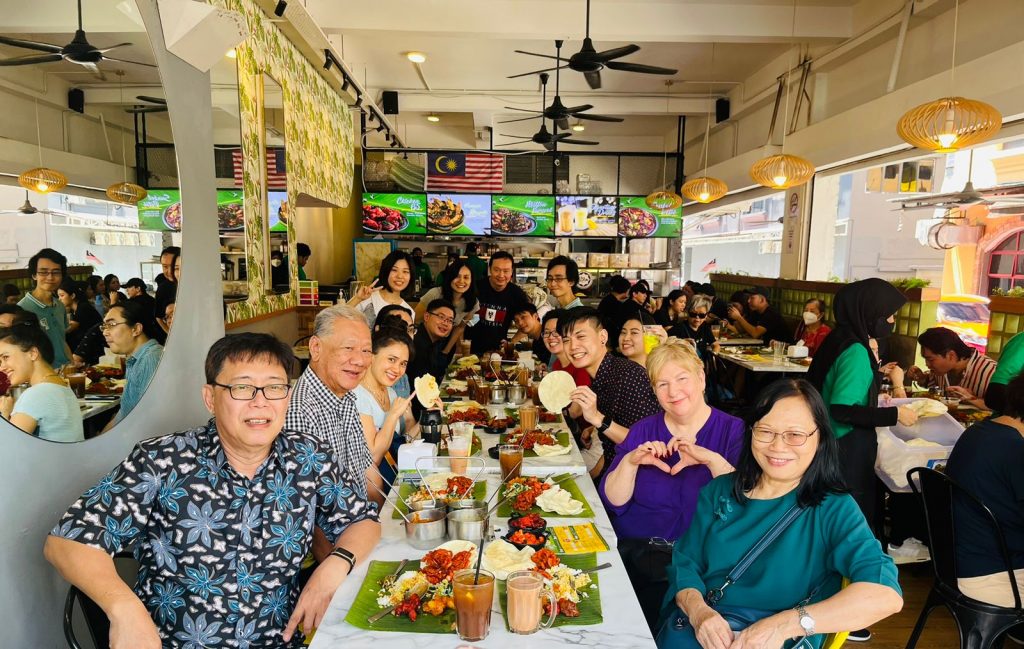
In a typical banana leaf meal setup, a large, clean banana leaf is laid out in front of the diner, serving as both a plate and a tablecloth. The arrangement of dishes on the leaf is a crucial aspect of this tradition, with different items placed in separate sections. The cultural significance of this practice lies in the belief that the banana leaf infuses the food with a distinct flavor, enhancing the overall dining experience.
Various dishes are strategically placed on the leaf, with servings of rice occupying the center to symbolize sustenance. Curries such as mutton curry, fish curry or mutton curry, chutneys, and pickles are arranged in different sections around the rice, adding a burst of color to the table and contributing to an enticing visual element. This setup also encourages communal dining experience, as diners can easily share and pass different dishes around the table.
The separate sections on the banana leaf not only create an aesthetically pleasing presentation but also offer a practical way to enjoy a variety of flavors in one meal. This iconic dish setup exemplifies the harmonious balance of flavors and textures, as well as the food culture of sharing a meal with loved ones.
BananaBro’s Nod to Tradition
BananaBro’s, a well-known banana leaf rice restaurant, is dedicated to preserving and honoring traditional culinary practices. We take great care to ensure that these time-honored recipes are not forgotten in today’s fast-paced world. Our commitment to preserving tradition is reflected in the careful selection of ingredients and the meticulous preparation of every dish we serve.
At BananaBro’s, we believe in harmoniously blending heritage and modern taste to create a menu that satisfies both the senses and the soul. From our rich and flavorful curries to our perfectly seasoned grilled meats, each dish on our menu pays homage to the traditional flavors and cooking techniques passed down through generations. We take pride in our ability to capture the essence of authentic, time-tested recipes while adding our own unique twist to appeal to the modern palate.
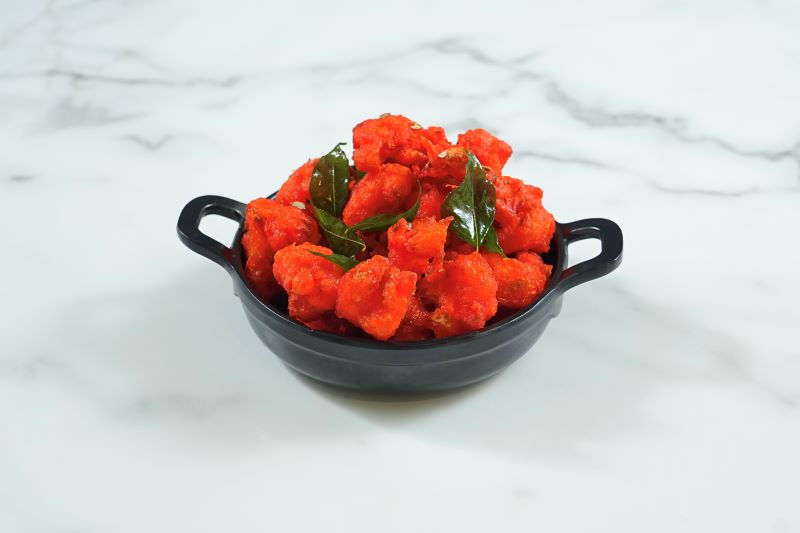
With a menu that includes classics like Chicken 65, Mutton Varuval & Deep-Fried Suqid, as well as innovative dishes that infuse traditional flavors into contemporary cuisine, BananaBro’s is the perfect place for those who seek a taste of tradition with a modern flair. We invite you to experience the harmony of heritage and modern taste at BananaBro’s, where every dish tells a story of our commitment to preserving traditions.
Conclusion: BananaBro Preserving Traditions
Throughout history, banana leaves have been an integral part of rice cooking in many cultures. Their natural moisture-retaining and aromatic qualities make them the perfect vessel for steaming rice, imparting a unique flavor and aroma to the dish. This traditions has been passed down through generations, preserving the heritage of using banana leaves in culinary practices.
At BananaBro, we invite you to savor the flavors of traditions and innovation. Our dishes are a blend of the past and the present, rooted in the rich history of using banana leaves in rice cooking while embracing modern techniques and flavors. Our commitment to retaining this heritage is evident in every dish we serve, allowing our guests to experience the authentic taste of our culinary roots.
As you dine at BananaBro, you will be transported on a flavor-filled journey that pays tribute to the historical significance of banana leaves in rice cooking. We celebrate the past while embracing a flavorful future, where tradition and innovation come together to create a truly unforgettable dining experience. Join us as we honor the heritage of using banana leaves and embark on a culinary adventure that promises to delight your senses.

